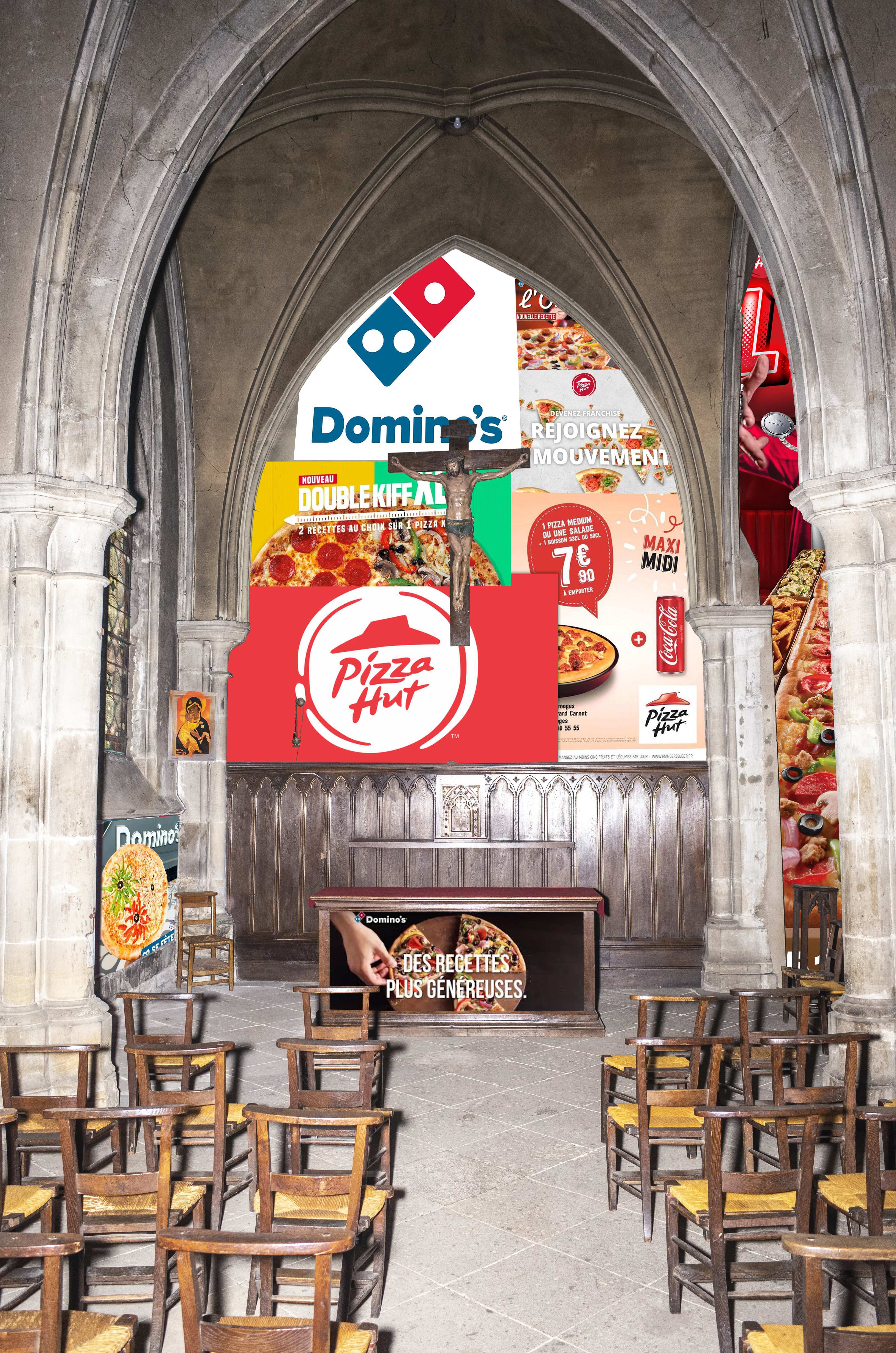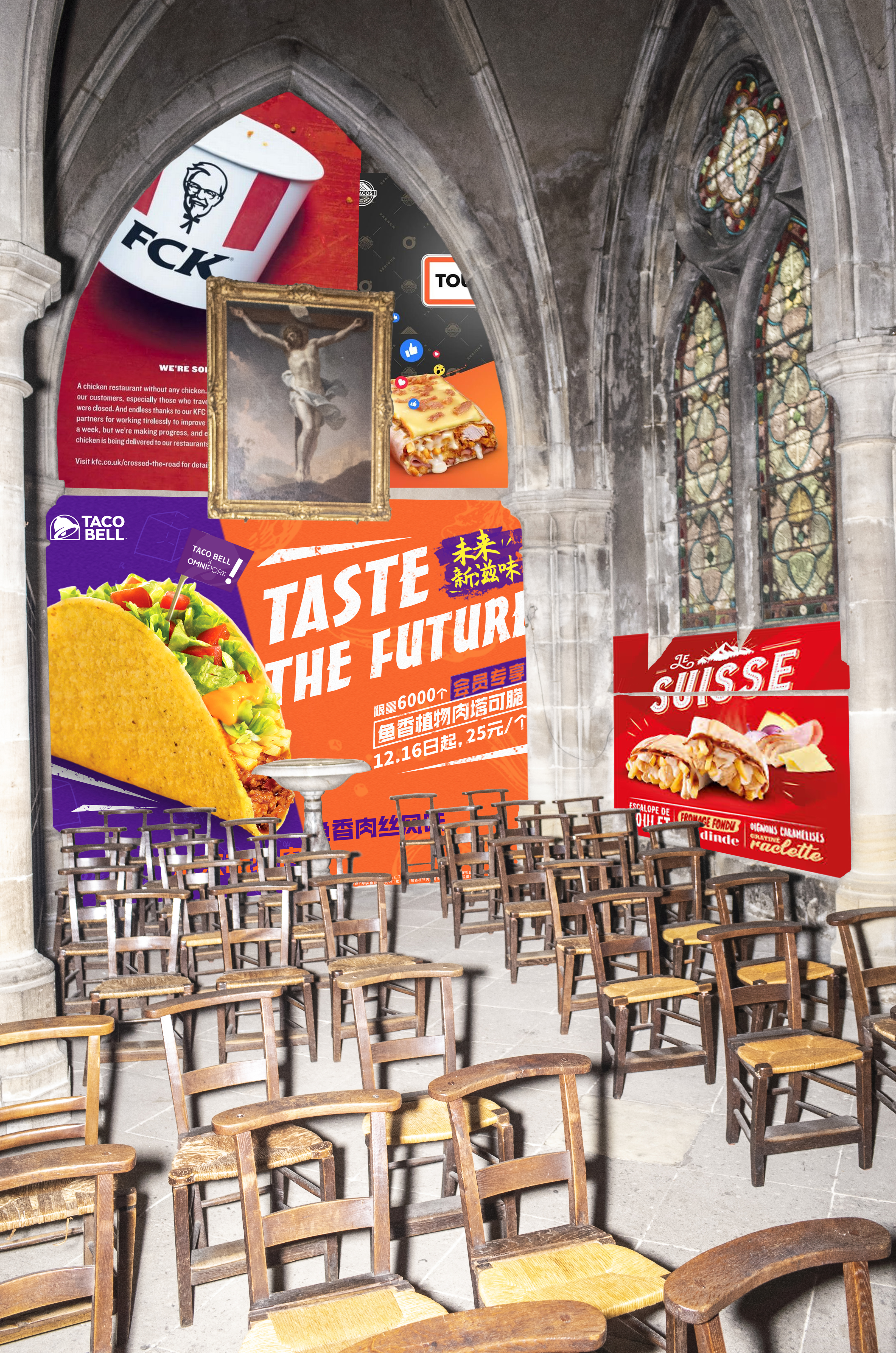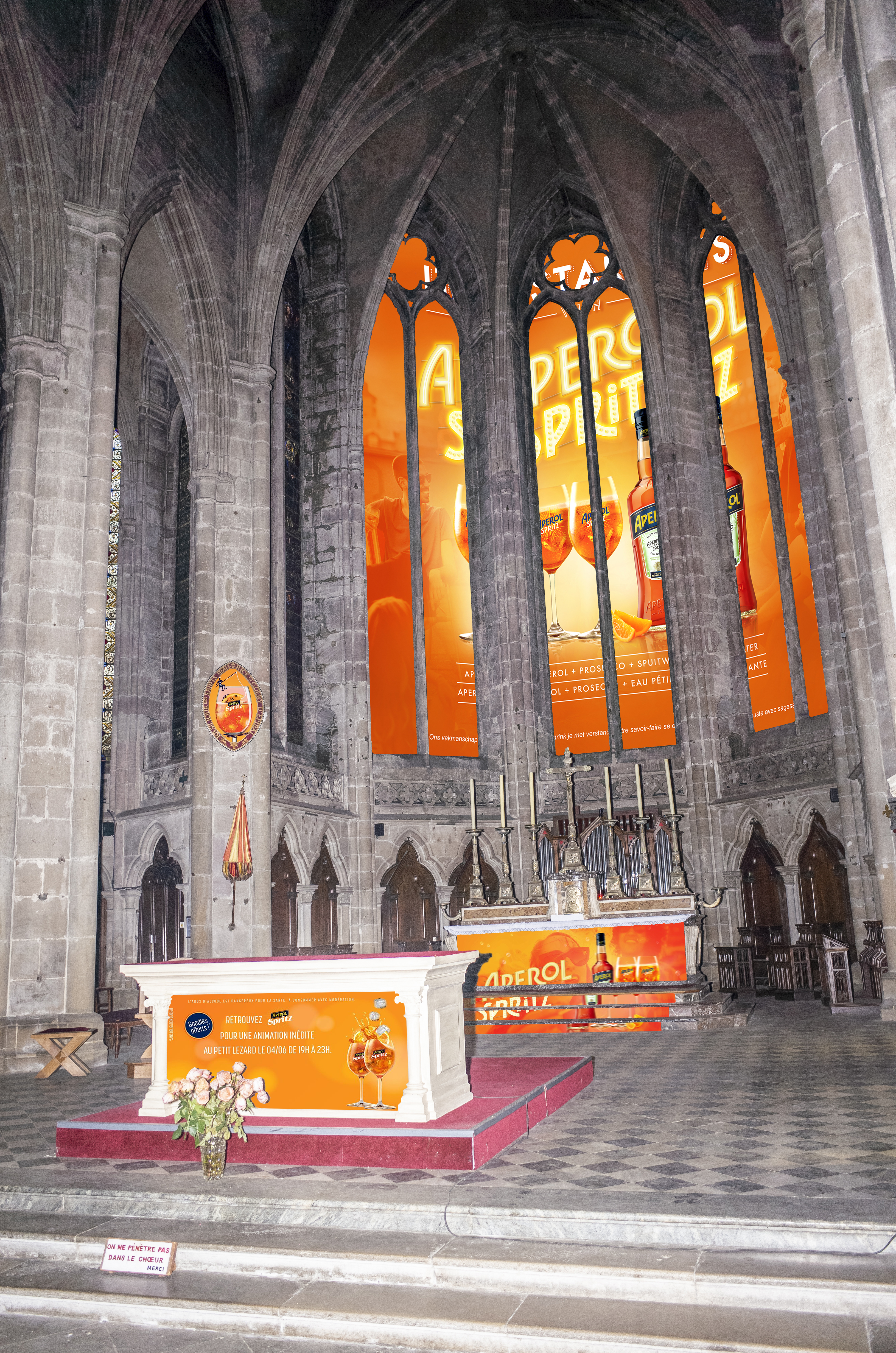Robin Lopvet

March 15th, 2021
Interview By Rachel Yanku
When did you first get into photography and photo collages?
I started to make some photography and photoshop edits when I was fifteen/sixteen years old. I spent a few years as a self-taught (artist) and then I went to fine arts school because I wasn't happy with the process of engineering school that I was enrolled in.
One of the techniques most prevalent in “Churches of Late Capitalism” is the superimposition of mass consumer advertisements onto the interiors of churches. In the process of selecting an advertisement or a church, does the order matter? What is this process like?
I was in my home town of Epinal, France, in the main church and I just had this thought that churches and religious places are for now almost the only places in our society that aren't full of big advertising. All pictures were shot in only one church( they were taken in maybe 15 minutes). Later I spent hours to put the ads in place. I wanted to chose wisely the juxtapositions between religious characters, symbols and ads. I did one or two but mainly it's completly random. Which isn't disturbing either, ads within capitalism usually appear random too.




Do you have any personal associations with the Churches you photograph and do you practice any religion?
I'm not religious at all, but am a pure atheist. I really like how powerful the symbols are within the church. In France we have a lot of beautiful ones. I really like churches as patrimony, history and architecture.
Do you think advertisements play a similar role in society as churches do?
France is an atheist country; religion doesn't have a public importance like it used to. In a religious society advertisements and the church have common points; it's public propaganda, guiding morals and habits. One major difference is the time those productions are designed to last. Churches are supposed to last as long they can; the message is still the same. Advertising keeps changing. There are no ads that you can see for more than two weeks; the message then becomes weak and they disappear. There are a lot of ads that vanish completely.
How would you define “Late Capitalism” in the context of this digital scape you have created? Do you ever imagine the collages transitioning from 2d to other formats/installations?
This project could definitely take many forms including installations or performance. I wanted to put together something sacred, holy and immortal with the essence of consumerism; completely opposite in some ways but similar in others. It's a little bit disturbing to think that you could use some soda during religious offices, but there is something that aesthetically fits perfectly. The perfectly flat vivid colours go really well with old stones. “Late Capitalism” refers to a state where it doesn't have any more limits and is ready to make anything to increase profits. The question was "where did it didn't go yet"?



| A lot of your previous collage work is very playful (Sky Dog images, warped fashion bodies) and have this underlying dark humor to it. What is your inspiration behind these insane transformations? Thanks for noticing that. I constantly search for a balance between fun and something more anxious. I don’t do a lot of research before making pictures. I create a lot of images and then pick up a few that have a kind of guideline. Sometimes I find something interesting in the images I make and then decide to dig further in that direction. |
What was an advertisement that you remember from your childhood?
I remember clearly the red Orangina ads with the character and his chainsaw. It was rare for me to see "bad guys" put on a pedistal (which is common and even fashionable today).
View more of Robin’s work here.
